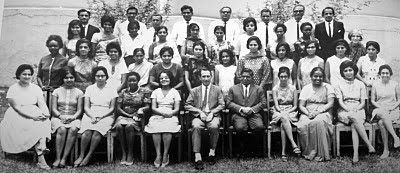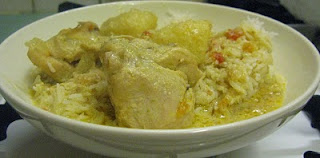Recently I have been obsessed by my East African heritage, first trigger was the picture of Aga Khan Primary School, and then reading these wonderful blogs by:
Kalwant Ajima (East African Asians the new Wahindi)
Vali Jaffer (Viva! East Africa)
Sultan Somjee (Splendours of Dawn in my English Suitcase).
Reading these has triggered many memories from the recesses of my brain.
So I thought I would share them with you, here goes:
Chachi (my mum) was born in Bukandula, Mpigi, Buganda. My grandfather was a dukawalla and sold a wide array of commodities; sugar, salt, soap, kerosene, fabric, medicines. When I visited Bukandula, my mama (Chachi’s brother) ran the shop. In the veranda of the shop were two fundis (tailors) sewing gomezi / busuti for women and kanzu for men. Opposite the shop was the Jamat Khana which doubled as a school. Chachi attended that school, where she was taught by Ali Mohamed Master, the same teacher who taught me at Aga Khan Primary School in Kampala. He is still alive and well and attends North West Jamat Khana!

Ali Mohamed Master (Top line, 4th from the Left)
Of course, as there was no electricity in those days, kerosene lanterns were used for light, and the windows just had wooden shutters (no glass). In the backyard there was a huge water tank to collect rain water, and a cess pit toilet (ewww!). There was also a mapara (guava) tree in the backyard, which was home to colourful weaver birds, and there were hundreds of nests in this tree. There were also a lot of hens in the back yard, I remember running after tiny little chicks in the yard, with the clucking mother hen trying to protect her young.
At dusk, the sky was filled with hundreds of bats. The nights were very dark, and the eerie sounds of the distant drums used to scare me. The best sound was the sound of the African rain on the corrugated tin roof.
My mama used to have a Peugeot box body truck. My mama and mami used to sit in the front and we children would be in the back, where they had put a mattress, no seats! It was a bumpy ride and noisy, the tarpaulin cover of truck would rattle loudly in the wind. Sometimes we would to sing; row row row your boat! It brings back such an incongruous image. Mama used to come to Kampala to get the goods for his duka, and sometimes one or the other of us would go back with him. He always brought a stem of small yellow bananas, which tasted totally different to the bananas we get in this country, we used to call them membu or menvu.
The great thing about the Asians in Uganda at that time was they were pioneers. They built their homes in the middle of nowhere. Unlike Bhuj India, there were no shops to buy anything ready made, food or clothes, furniture etc. Everything had to be made. Women would cook everything from scratch from chevro to athanu (pickle) and papad (papadom). That was why Chachi and women like her were expert cooks. In Kampala my Ma (my aunt actually – don’t ask) had a jhundher that comprised of two mill stones on top of each other. The bottom stone was fixed, the top could rotate, so that when it was spun it would grind everything in between the two stones. This was used to make flour as well as various dals. Ma was also an expert in making athanu – gunda, gor kerri, limu etc. Ma got married when she was thirteen, (she was born in Tanzania) I don’t know where she learnt her skills, but she was the person who taught chachi how to make athanu.
Our kitchen in Kampala had a built-in charcoal stove, chachi used to sit on a low stool (patlo) and make Mani (chapatti) for us. The aroma was so enticing, Malek (my cousin and 2 years younger than Chachi) used to sprinkle sugar on the hot chapattis before giving to us to eat. Kerosene primus was also used for cooking.
The khoja cuisine had to adapt to local vegetables and fruit, such as mogo and matoke. So we loved matoke in peanut sauce, or matoke and bijanjaalo, Fried mogo (dejays style) was a real treat. Local farmers would bring round various vegetables round the neighbourhood, they would scream out whatever they were selling, for example: Mboga (vegetables), Nyana (tomatoes), Bbiringanya (aubergines), Bijanjaalo (beans). Or Chachi or Ma would shout “Lasse ki?” and they would answer with a stream of vegetables they were selling.
I am amazed I have been able to remember so much………. More soon.















 //PART 2
//PART 2